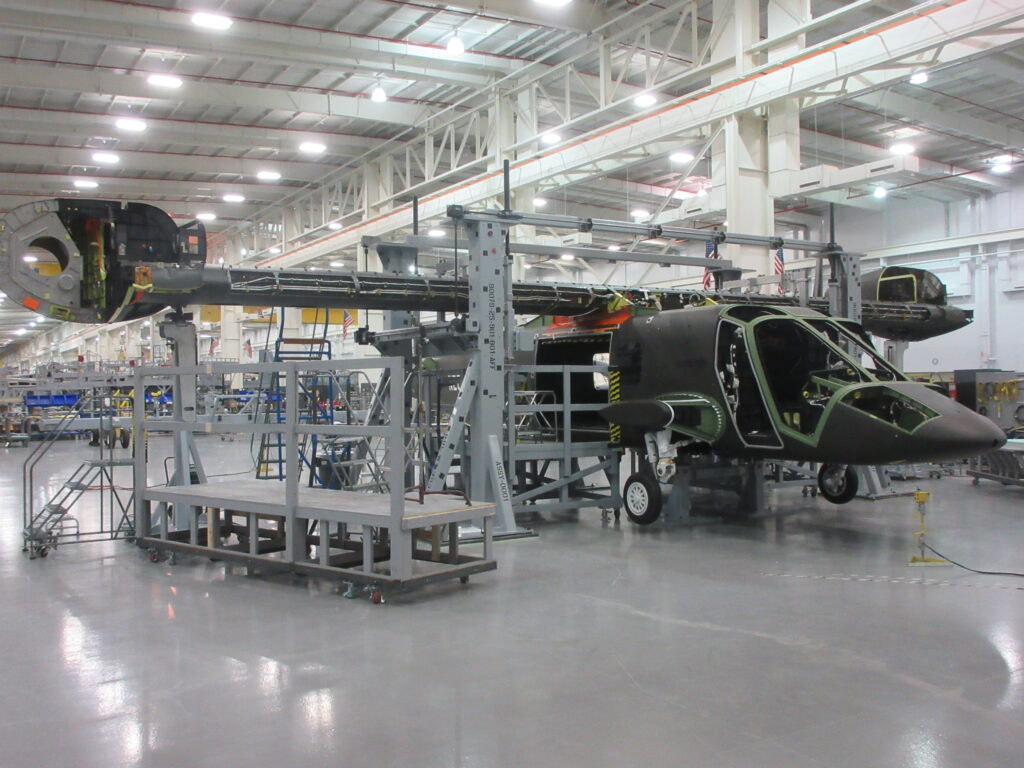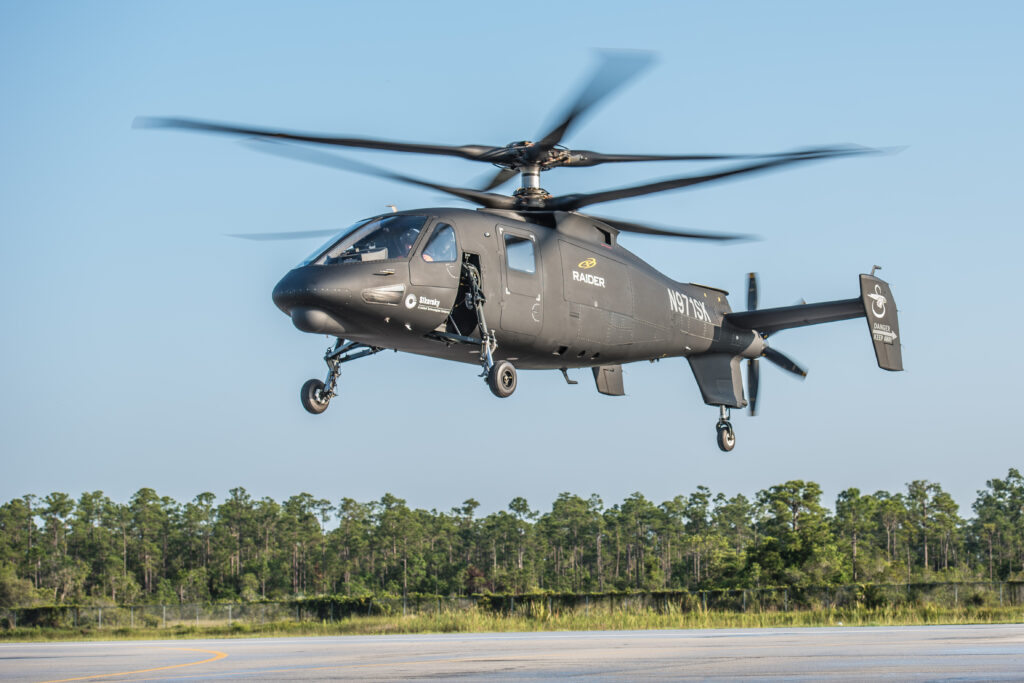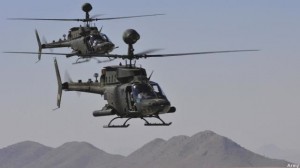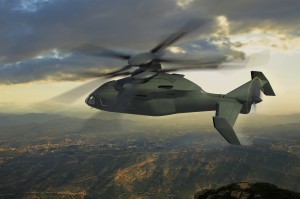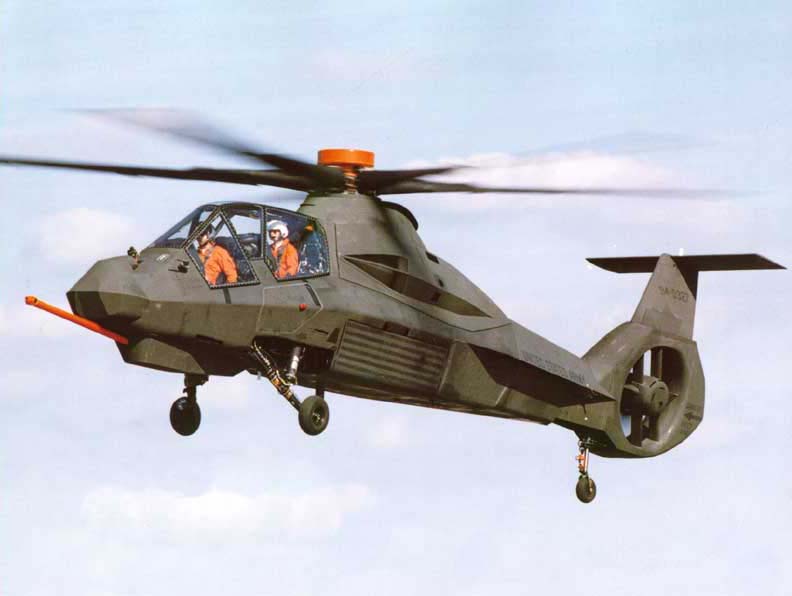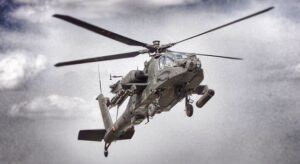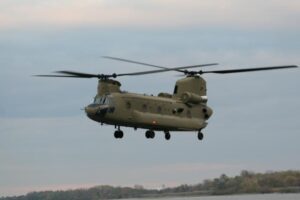Army Can Revolutionize Aviation Without Busting Budget, Leaders Say
Posted on
ARMY S&T CONFERENCE: “We’re not bringing a big bill to Congress,” Army aviation program manager Dan Bailey told me here. “Aviation’s paying its own way.”
After an unbroken string of failed helicopter programs over the last 14 years (RAH, ARH, and AAS), Army leaders believe they’ve broken the curse with a new approach to acquisition. With mature technology and careful timing, they plan to throttle back upgrades to current helicopters — whose modernization will be mostly complete in the next few years — as they ramp up spending on new, much faster aircraft.
Both Bailey, the Army’s senior future-aircraft official at its Aviation R&D center, and Gen. James McConville, the Army’s senior pilot and Vice-Chief of Staff, told reporters here that the service plans to field a new armed scout, a new assault transport, and a family of new drones, beginning in the early 2020s. And they’ll do it all without additional funding for Army aviation, which is historically the service’s biggest modernization expense.
How? “That’s about balance,” Gen. McConville said Tuesday. While he wouldn’t specify cuts — “we’re not ready to say what’s going to take a back seat yet; we want to see what industry can deliver… and what the costs (are)”– he said that “we realize we have to balance future aviation within the portfolio.” In other words, they’re not counting on raiding money from other Army accounts or getting a topline increase.
“Our plan for future development is within the aviation portfolio completely,” Bailey told me and a fellow reporter this morning. “We haven’t stopped anything, we haven’t killed any programs — we have scaled programs some at a lower level to do this.”
FARA and FLRAA
The first of the new machines will be FARA, the Future Attack Reconnaissance Aircraft, a small and agile scout to replace the Vietnam-vintage OH-58 Kiowas finally retired last September. Moving at a meteoric pace, the Army started publicly talking about a new scout in March, put a draft solicitation out for comment June 22, held an industry day June 28, and will have the final solicitation out by the end of September.
That last document will have the multi-year funding profile for FARA, which the published draft leaves blank. “I can’t publicly say what it is right now because honestly we don’t yet have a budget yet for the coming year,” Bailey told me.
“We’re in the final process right now of briefing the last senior leaders,” he said. “The last briefing’s on Monday, and the Army Contracting Command right now has the solicitation draft, going through its formal process.”
Unlike the funding, the FARA timeline has stayed constant since the first draft, Bailey said: “We’ll have initial designs in ’20, we’ll have a final decision point (selecting two contractors) early in ’21, we’ll build the aircraft in ’21-22 and flight test it in ’23.”
After FARA comes FLRAA (pronounced “Flora”), the Future Long-Range Assault Aircraft. That’s the new and more euphonious name for what the Army had been calling Future Vertical Lift Capability Set 3 (FVL CS3): a mid-size transport to carry troops deep into hostile territory, replacing the UH-60 Black Hawk.
In fact, the transport aircraft was originally first on the plan until the Army unexpectedly put the scout ahead of it. Under the Joint Multi-Role (JMR) demonstration program, Bell Helicopter already has its FLRAA prototype flying, the V-280 Valor tiltrotor, while a Sikorsky-Boeing team is still building their rival SB>1 Defiant compound helicopter.
There is no prototype flying for the FARA scout, although Sikorsky’s S-97 Raider comes fairly close. That doesn’t worry Bailey.
“We’re not ready to start building FARA aircraft,” he said. “We’re ready to start designing” and making tradeoffs between cost and capability.
“Actually, industry has FARA designs they’ve been working on in the background for years,” he went on. “They haven’t been isolating themselves to a Cap Set 3 or a FLRAA size point; they’ve been thinking about smaller aircraft for a long time as well.”
Those designs can’t be evolutionary improvements on the helicopter designs the world has used since the 1950s, McConville told the National Defense Industrial Association conference here. “If you want to compete for this Future Attack Reconnaissance Aircraft, we are putting range and speed goals in place that are going to drive it to be a different type of platform,” he said. And that’s doable: “Industry is providing demonstrations to allow us to basically break the physics barriers that we have with conventional helicopters.”
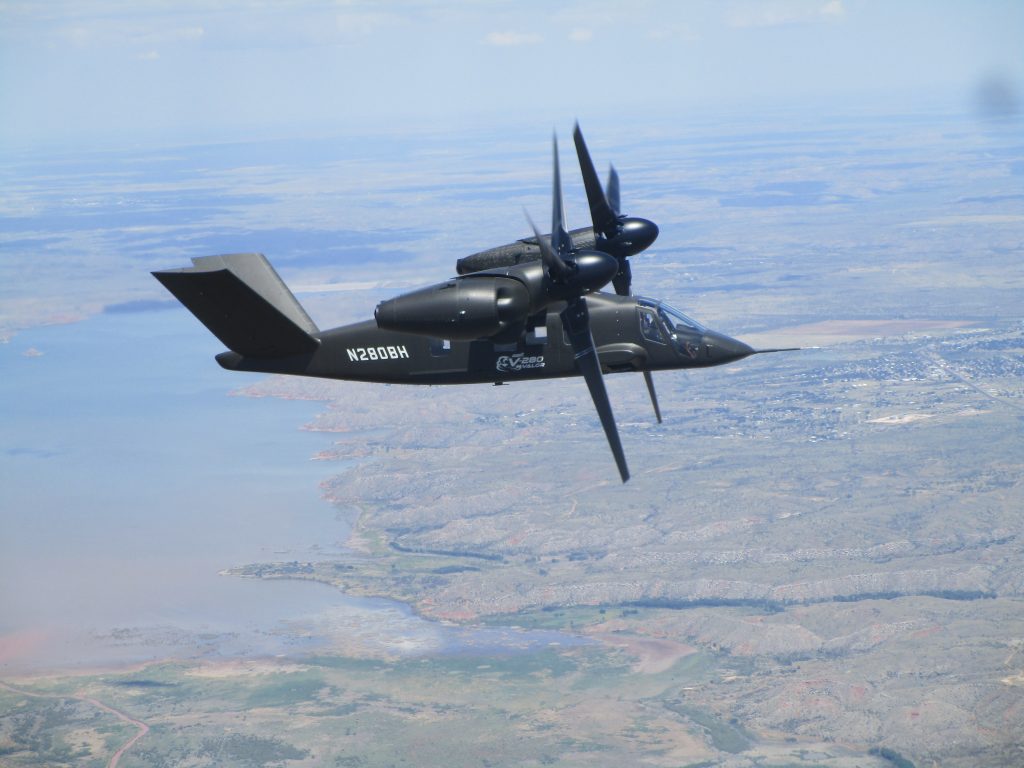
Bell V-280 Valor tiltrotor in level flight with rotors facing forward. The V-280 is widely considered the leading candidate for the Future Vertical Lift assault aircraft but would need to be scaled down for FARA.
Big Changes, Tight Timelines
These new aircraft will need much more speed and range because they’ll have to penetrate cutting-edge Russian and Chinese air defenses, McConville and other Army leaders have repeatedly said.
“In the future, we should expect an integrated air defense network,” McConville told reporters. “We’re going to have to work our way through … and take that down,” using a combination of long-range precision-guided missiles, expendable drones, cyber/electronic warfare, and radically new kinds of aircraft.
Speed is the most dramatic difference: The latest Black Hawk cruises at 150 knots (172 miles per hour), but the draft FARA requirement is 180 knots (207 mph). That 20 percent increase isn’t just quantitative difference. It requires a radically new design to get past the aerodynamic limits of conventional helicopters.
Bailey told me he’s not seen any conventional helicopter concept that could meet the Army’s requirement. “You’ve got to have some kind of propulsion capability to get to the speeds we’re asking for,” he said, not just a traditional rotor. But “there’s all kinds of ways” to do that, he went on:
- a compound helicopter like Sikorsky’s S-97 (now flying) and the Sikorsky-Boeing SB>1 (in construction), with a traditional rotor on top and a pusher propeller at the rear;
- a tiltrotor like Bell’s V-22 Osprey (in service) and V-280 Valor (prototype now flying), so-called because it tilts its rotors horizontally like a helicopter to hover but vertically like a propeller plane to cruise;
- a ducted-fan helicopter, like AVX’s rejected proposal for the Future Vertical Lift Joint Multi-Role demonstration, or one with a fan for propulsion built into the tail; or
- a helicopter with a tail rotor that swivels to provide thrust.
And that’s just the ones Bailey could name off the cuff. He expects to award four to six contracts next year for different designs, then select the two best to build actual prototypes.
Yes, these new designs will require extensive testing. But modeling and simulation software has improved vastly since the RAH-66 Comanche ran aground, 14 years ago. So the Army believes there’ll be far fewer time-consuming, budget-busting surprises when they move from wind tunnels to test flights. Of course, we’ve heard such predictions in the past; only time will tell if, this time, the models have really gotten good enough.
Tight Budgets, High Demands
The Army doesn’t only want much faster aircraft: It wants them to cost the same to build, operate, and maintain as its current helicopters. Otherwise it can’t fit them into an unchanging aviation budget. That’s an awfully high bar.
“Quite frankly, we’re being very demanding as we talk to industry. Cost matters,” Gen. McConville told the NDIA conference. ““What we’re looking for, for these aircraft, is them to be delivered at very much a similar price to what we’re paying for our aircraft right now.”
“We’re telling industry if you can’t do it, let us know,” he said.
The current helicopter fleet is in great shape, McConville and Bailey said, which gives the Army a solid jumping-off point for the next generation.
“There’s probably no better time than right now to do it,” Bailey said. “When you look at that older fleet, they’re as modernized as probably they’re going to be.”
Boeing is upgrading its Cold War-era Apache attack helicopter to the AH-64E Guardian variant, and its Vietnam-vintage Chinook heavy lift helicopter to the CH-47F Block II configuration. Sikorsky is upgrading its Black Hawk assault/utility helicopter, introduced in the 1980s, to the UH-60M and UH-60V. Production of these upgrades should wrap up just as the FARA scout and then the FLRAA transport enter production.
“The [AH-64] E-model will be done production in the mid-’20s, the [CH] 47F is done, the [UH-60] M-model and the Victors will be basically done towards the end of the ’20s,” Bailey told me. “The (funding) profile that’s currently laid into produce those aircraft will go to producing the FARA and the FLRRA. So it’s just moving the money to the next thing.”
“We’re excited to see what comes of it,” Bailey told me.
Me too, I replied, adding, with a nervous laugh, that we should all pray the Army finally gets something fielded.
“And we will,” he said. “We’ll do it.”
Subscribe to our newsletter
Promotions, new products and sales. Directly to your inbox.

